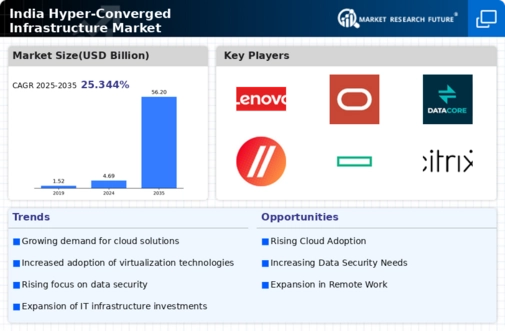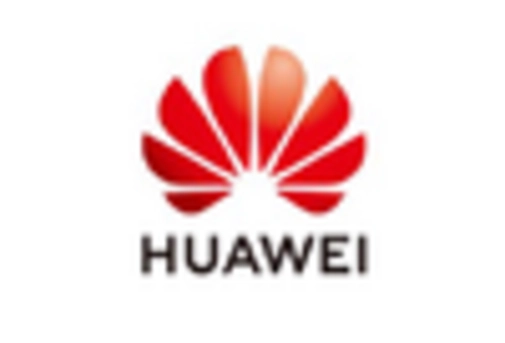The India Hyper-Converged Infrastructure Market is evolving rapidly as organizations seek improved efficiency and simplified IT management. The competitive landscape is characterized by a growing demand for integrated solutions that combine storage, computing, and networking into a single cohesive unit. As a result, various players are strategically entering the market, aiming to cater to the diverse requirements of businesses looking to streamline their operations while reducing IT expenditures.
The competition in this sector is influenced by the rising need for virtualization, increased adoption of cloud technologies, and the desire for infrastructure scalability among enterprises across India. This growing focus on digital transformation has attracted both established technology giants and emerging players, each vying for market share by offering unique features and strategic partnerships.Lenovo stands out in the India Hyper-Converged Infrastructure Market with robust solutions tailored for a wide array of industries. The company's strengths lie in its comprehensive product portfolio, which integrates high-performance hardware with efficient software solutions designed for seamless deployment.
Lenovo's localized services enhance customer engagement, ensuring that Indian businesses receive timely support and optimized performance from their hyper-converged systems. Additionally, Lenovo has invested in partnerships and collaboration with key players in the tech ecosystem, allowing for an enriched offering that resonates with the specific needs of the Indian market. The company's emphasis on innovation and customer-centric approaches further empower it to compete effectively and establish a significant presence in the landscape.Oracle's footprint in the India Hyper-Converged Infrastructure Market is marked by a strong presence through its advanced cloud solutions and integrated services.
The company offers a range of products, such as Oracle Cloud Infrastructure and Oracle Exadata, which are tailored to provide optimal performance and reliability for enterprise applications. Oracle's strengths include its extensive experience in database solutions and enterprise software, which adds significant value to its hyper-converged offerings. The firm has also engaged in strategic mergers and acquisitions to bolster its capabilities and enhance its service portfolio in India, thus increasing its market competitiveness. Its commitment to delivering cutting-edge technology solutions, coupled with strong support mechanisms, positions Oracle favorably within the Indian hyper-converged infrastructure landscape.























Leave a Comment